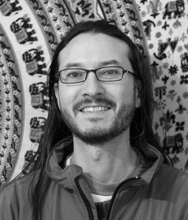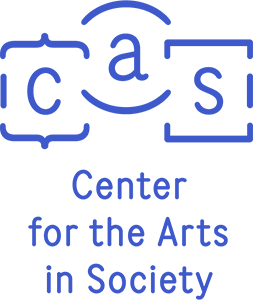Felipe Gomez Curator's Statement
 A bit over a year ago, when Narrative Initiative co-coordinator Rich Pell and I first set off with CAS director James Duesing to organize a series of events to bring the 3-year initiative to closure, little did we know that our playful search for a series title would end up feeling so poignantly descriptive. Finding inspiration in a Hispanic Studies course I taught in the Fall 2018, “Después del Fin: Post/Apocalyptic Visions of Latin America,” and on the “Art at the End of the World” course Rich was getting ready to teach in CFA this Spring, we settled for a line-up of events connected under the name “Resistance at the End of the World,” and that would bring to our campus local and international figures as diverse as Paul Gravett, Alex Rivera, Cristina Ibarra, Alba Triana, and Carolina Sanín. These last two were scheduled to speak at a symposium that was to be held in Porter Hall on the morning of the 28th of March. Once it became clear this was not going to happen, Rich proposed that CAS move swiftly and announce a new online seminar series titled, "It Was Only A Metaphor for Bleepsake!!!" Although the title has been edited a bit for comfort, this weekly email is, I hope, still in the spirit of what we originally intended.
A bit over a year ago, when Narrative Initiative co-coordinator Rich Pell and I first set off with CAS director James Duesing to organize a series of events to bring the 3-year initiative to closure, little did we know that our playful search for a series title would end up feeling so poignantly descriptive. Finding inspiration in a Hispanic Studies course I taught in the Fall 2018, “Después del Fin: Post/Apocalyptic Visions of Latin America,” and on the “Art at the End of the World” course Rich was getting ready to teach in CFA this Spring, we settled for a line-up of events connected under the name “Resistance at the End of the World,” and that would bring to our campus local and international figures as diverse as Paul Gravett, Alex Rivera, Cristina Ibarra, Alba Triana, and Carolina Sanín. These last two were scheduled to speak at a symposium that was to be held in Porter Hall on the morning of the 28th of March. Once it became clear this was not going to happen, Rich proposed that CAS move swiftly and announce a new online seminar series titled, "It Was Only A Metaphor for Bleepsake!!!" Although the title has been edited a bit for comfort, this weekly email is, I hope, still in the spirit of what we originally intended.
What is the role of literature and art in the narrative of apocalypse? In a profile of novelist Jenny Offill penned by Parul Sehgal and published by The New York Times, the writer asks about the work she’s been attempting on her latest book: “Can you still just tend your own garden once you know about the fire outside its walls?” Sehgal elaborates on the conversations between artists thinking about depicting the climate crisis, and scientists and activists who have long been struggling with the “narrative problem” of the climate emergency: “How do we write a story with an antagonist when we are the antagonist? Do we have a responsibility to avoid narratives of blame and despair, lest they stoke our sense of hopelessness and passivity? Or is there a value, even a moral imperative, in presenting the threats, as frightening as they are?”
In their own ways, Alba Triana and Carolina Sanín are offering their thoughts on this esthetic and narrative problem in the pieces they have generously chosen to share with us this week. In a manner that might be clearer to some of us now that we’ve had the experience of seeing and hearing nature with a different attention from our temporary enclosures, Triana proposes a series of sound and light sculptures from her deep observations of nature, in which vibration seeks to promote connection and identification with life sources. Sanín’s piece comes from The Children, a novel exploring the limits of isolation and intimacy translated into English by Nick Caistor. In it we find the protagonist, Laura Romero, in deep and at time bizarre conversations with Fidel, a six-year-old child who has unexpectedly and inexplicably appeared in her life and who now seems to fill up all of her time and her thoughts in a way that may be familiar to all who have suddenly been tasked to work from home while also home-schooling and attending to the demands and magical energies of children.
